Introduction
Caring for these plants is simple. You can easily prune and tend to the branches without ever needing a ladder. Their roots naturally limit growth, making them portable enough to move indoors when winter temperatures drop or the climate turns too cold. Keeping them in a container or potted setup ensures flexibility—you can shift them inside the garage or near a sunny window to protect their leaves and blossoms. In tropical or subtropical regions, these plants thrive outdoor, while in cooler zones, they make excellent indoor companions.
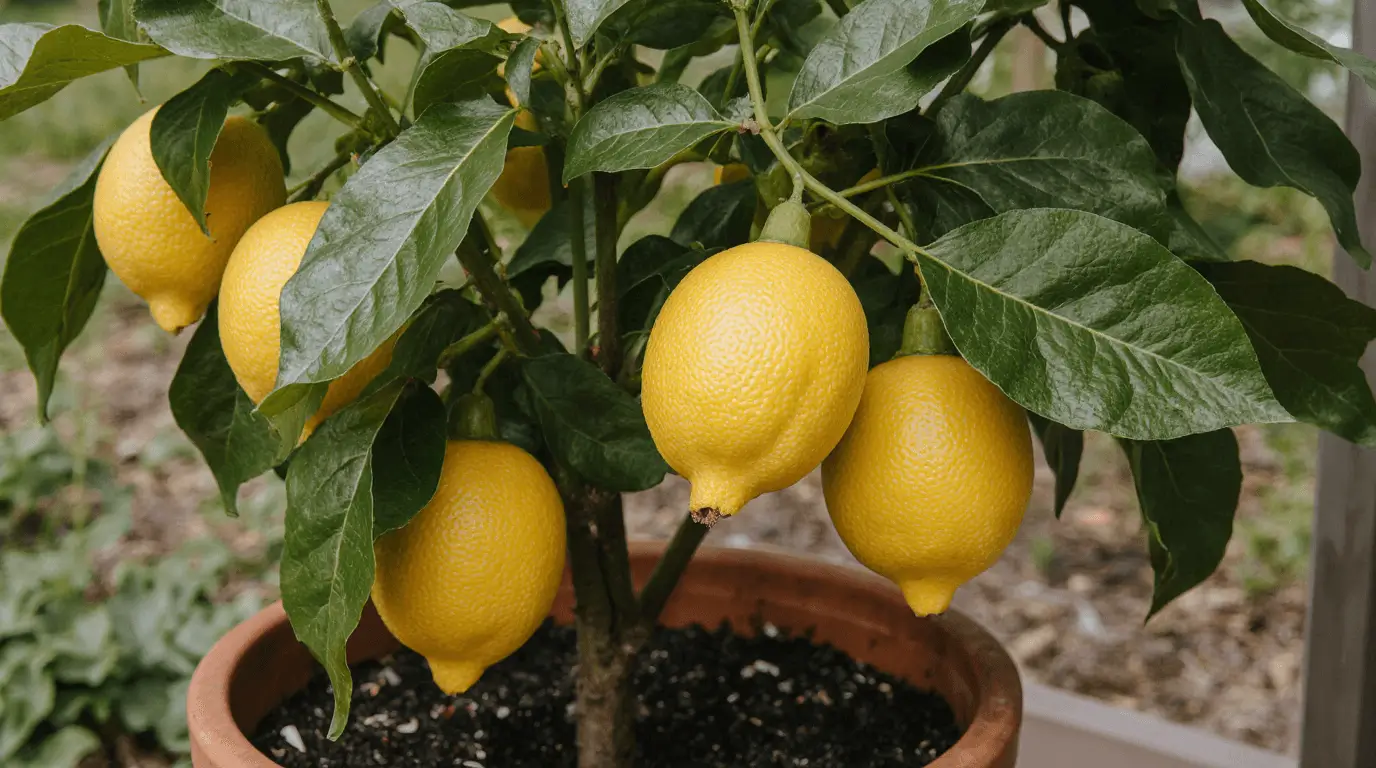
Over the years, I’ve learned that lemon plant care depends on good watering, quality soil, proper drainage, and balanced fertilizer. Using organic nutrients keeps the environment healthy and encourages steady growth. Whether you’re into container gardening or backyard gardening, maintaining the right shade and sunlight balance helps in better fruiting and harvest. A well-grafted or hybrid lemon variety from a trusted nursery ensures stronger rootstock, better maintenance, and longer lifespan. For those who enjoy gardening and landscaping, these homegrown, edible plants with fragrant flowers bring beauty, taste, and joy to any orchard or garden setting. With easy pruning, manageable height, and their compactness, small trees like these are truly a gift to anyone who loves natural beauty and the pleasure of homegrown lemons.
What is a Dwarf Lemon Tree?
A dwarf lemon tree is a miniature version of standard lemon trees, designed for home gardeners who have limited space but still want to enjoy delicious fruit. These smaller trees grow beautifully in modest containers, patio pots, or indoor garden rooms, making them a popular option for those living in compact areas. Unlike big varieties, they reach about 6 to 10 feet at maturity, which makes caring for them much easier—no heavy-duty ladders required for harvesting. I’ve seen them thrive in gardens, backyards, and even orchards, where they look elegant and producing mounds of golden fruit. Their size makes them versatile, easy to get started with, and perfect for adding beauty and freshness to any space.
Growth Size of a Dwarf Lemon Tree
A dwarf lemon tree may look miniature, but it can still grow strong and healthy with the right careful pruning and setup. These trees usually reach about 6-10 feet in height at full maturity, while their width can spread around 3-4 feet when grown outdoors. Their genetically dwarfing rootstock naturally limits the vertical increase, helping them stay compact and manageable. I’ve seen home gardeners successfully maintain Meyer, Ponderosa, Bonnie, and Brae varieties, keeping them even smaller through regular tipping of long stems in early spring. With this ideal regimen, the trees stay beautiful and easy to handle all year.
When grown in containers, the size can be further restricted, allowing them to thrive indefinitely in tiny backyards or gardens with limited planting space. Even in indoor or patio setups, these varieties flourish beautifully, offering steady fruit production. Compared to full-grown types that can stretch over 20 feet in the ground, dwarf trees adapt well to 12-inch or larger pots without stunting their fruit growth. For any gardener with just a few acres or even less, choosing a perfect selection like Meyer, Bonnie, or Ponderosa ensures steady production and long-lasting beauty in a home garden.
Ideal Growing Conditions
Dwarf lemon trees thrive best when the environmental conditions are just right, helping their small frames flourish and produce abundant fruit. To achieve the ideal factors, provide them with warmth, sunlight, and care that supports steady growth.
Sun Exposure Needs
Dwarf lemons require at least 6-8 hours of direct, unfiltered sunlight daily to stay healthy and strong. This light fuels growth, stimulates prolific blossoms, and boosts lemon production throughout the year. When planting outdoors, choose a sunny southern-facing location with no shade from buildings or trees, as too much cover can slow their progress. If kept indoor in pots, rotating them regularly prevents one-sided stretch, ensuring balanced exposure and even development for beautiful, thriving plants.
Soil and Drainage
When you plant dwarf lemon trees, it’s important to use rich, loose, and well-draining soil to keep their roots healthy and strong. Avoid heavy clay because it holds water, leaving the roots vulnerable to root rot. I always incorporate compost into container plantings to improve drainage and boost nutrients naturally. It’s also smart to test pH and amend the mix if needed to reach a slightly acidic 6.0-6.5, which is ideal for citrus. Whether outdoor planting or using pots, always ensure sufficient holes for airflow and moisture control to keep the soil balanced and thriving.
Watering Habits
Dwarf lemon trees need regular water to maintain lustrous growth, but proper care is essential to avoid overly soggy soil. After planting, allow the top inch of the soil to slightly dry before watering again. During fruiting, take care not to under or overwater potted plants, as balanced moisture keeps them thriving and healthy.
Choose an Adequately Sized Pot
When selecting a container for dwarf lemons, always remember that bigger is better for strong root growth and healthy development. Choose a pot about 12-15 inches wide and deep to accommodate the expanding root system. The dwarfing rootstock naturally limits tree height but still needs enough depth and diameter to spread evenly underground. Using an overly small pot stunts proper maturation, so give your tree space to breathe and grow freely for the best results.
Provide Optimal Drainage
To ensure healthy growth, your chosen container should have sufficient drainage holes at the bottom to prevent waterlogging after watering. I always elevate pots slightly to improve drainage and let extra moisture escape. You can also consider lining the first inch with gravel or stones before adding acidic potting soil amended with compost, which keeps the roots aerated and thriving.
Fertilize Regularly
To help dwarf citrus trees flourish, provide regular feedings using a balanced fertilizer throughout the active growing season from early spring to mid-fall. I always prefer a citrus-specific formula when possible, as it’s designed to encourage lush leaves and abundant lemons. Be sure to follow label-recommended dilutions and feeding schedules carefully—this ensures proper nutrition without overdoing it and keeps the trees thriving year-round.
Refresh the Potting Mix
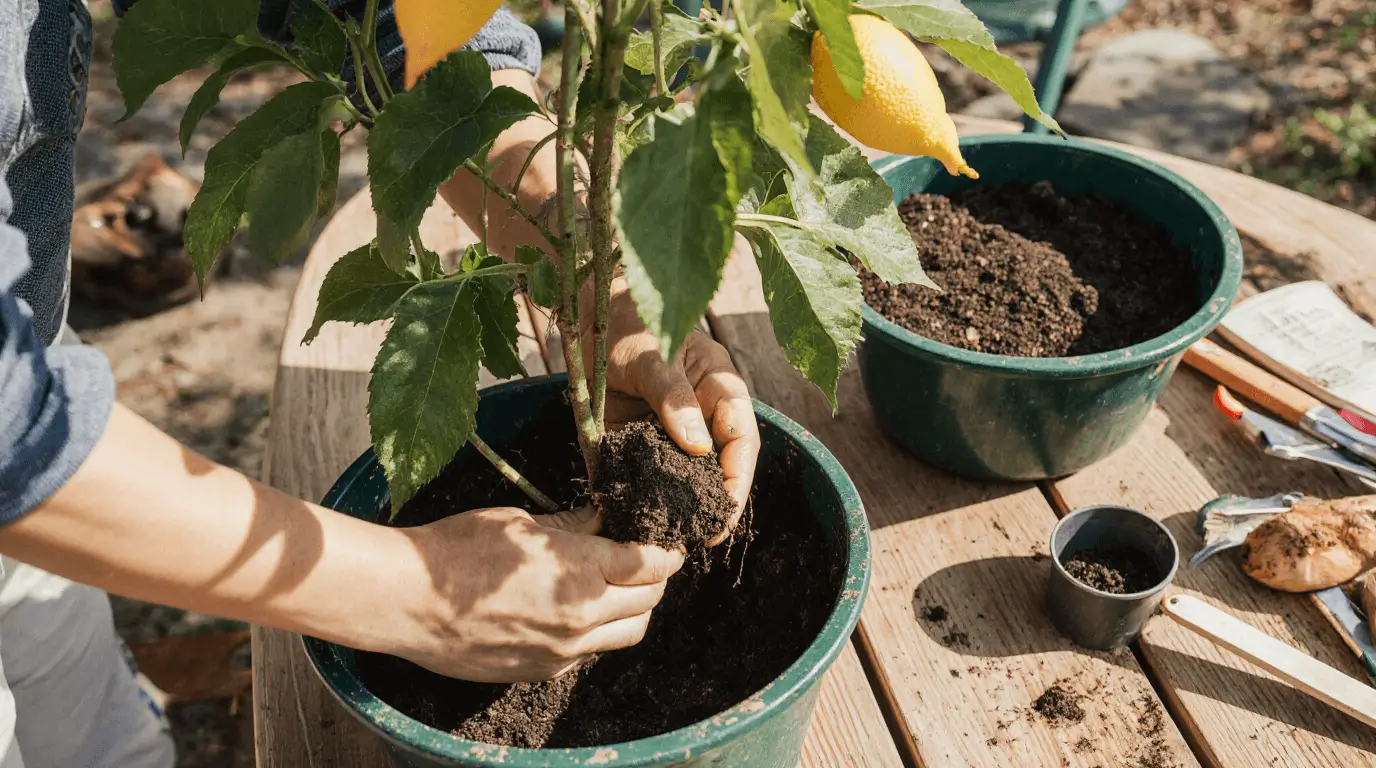
To maintain optimal nutrition and moisture, it’s important to repot dwarf lemon trees into fresh soil every 2-3 years. I’ve found that early spring is the most ideal time because the roots start growing actively. When doing this, gently loosen the root ball, prune circling roots, and place the plant into a clean container filled with new potting mix amended with slow-release granular fertilizer. This step not only revitalizes the soil but also helps in preventing compaction.

The right drainage and fertilization schedule, along with occasional repotting, ensure your refreshed variety keeps thriving year after year. Each time I refresh the soil, I notice healthier leaves and stronger fruit production — a clear sign that good repotting practices keep citrus plants at their best.
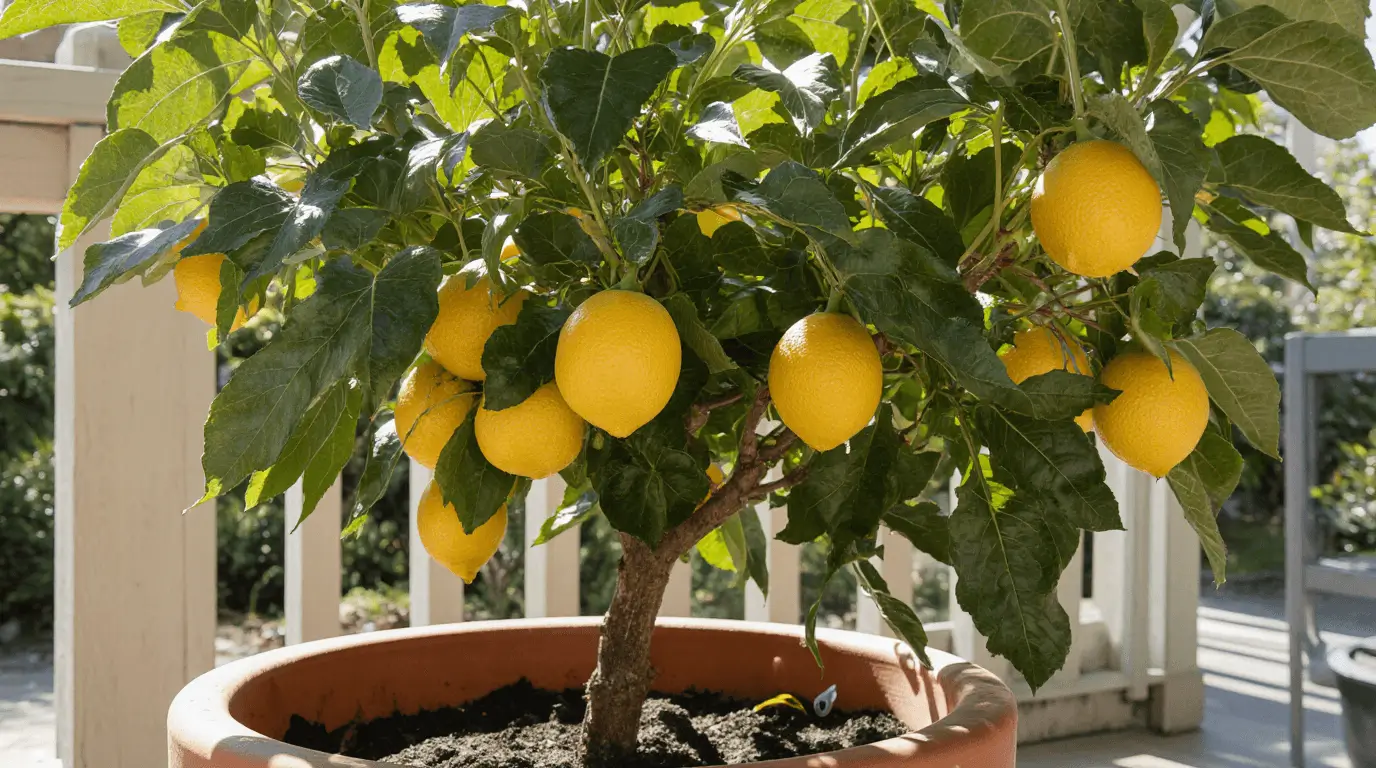
Conclusion
Growing a dwarf lemon tree is one of the most rewarding experiences for any home gardener. Whether you live in a small apartment, have limited backyard space, or just love the idea of homegrown citrus, these compact trees bring both beauty and productivity to your space. With the right care — including proper watering, good drainage, adequate sunlight, and regular fertilization — your dwarf lemon tree can thrive and bear juicy, fragrant lemons year after year. From the Meyer to the Ponderosa varieties, these petite yet powerful trees add a refreshing touch of nature to your home, offering the joy of harvesting fresh lemons right from your patio or indoor garden.
Read Also: Gardening & Plant Care Guide for Thriving Plants
FAQs
Q1. How tall do dwarf lemon trees grow?
Dwarf lemon trees typically grow between 6 to 10 feet tall, depending on the variety and growing conditions. When planted in containers, they may stay even smaller while still producing full-sized lemons.
Q2. Can I grow a dwarf lemon tree indoors?
Yes! Dwarf lemon trees grow beautifully indoors if they receive 6–8 hours of sunlight daily. Place them near a sunny window or use grow lights for consistent light exposure.
Q3. What is the best soil for dwarf lemon trees?
Use well-draining, slightly acidic soil (pH 6.0–6.5) mixed with compost. Avoid heavy clay soils as they retain excess water, which can cause root rot.
Q4. How often should I water my dwarf lemon tree?
Water when the top inch of soil feels dry. Overwatering can damage roots, while underwatering may reduce fruit yield — so aim for balanced moisture.
Q5. How can I keep my potted dwarf lemon tree healthy?
Ensure your pot has good drainage holes, feed with a citrus-specific fertilizer from spring to fall, and repot every 2–3 years to refresh the soil and boost root health.
Q6. Do dwarf lemon trees produce full-sized fruit?
Absolutely! Despite their small size, dwarf lemon trees produce full-sized, juicy lemons with the same flavor and aroma as standard varieties.
Q7. What’s the best dwarf lemon tree variety for beginners?
The Meyer lemon is perfect for beginners — it’s compact, cold-tolerant, and highly productive, making it ideal for both indoor and outdoor gardening.

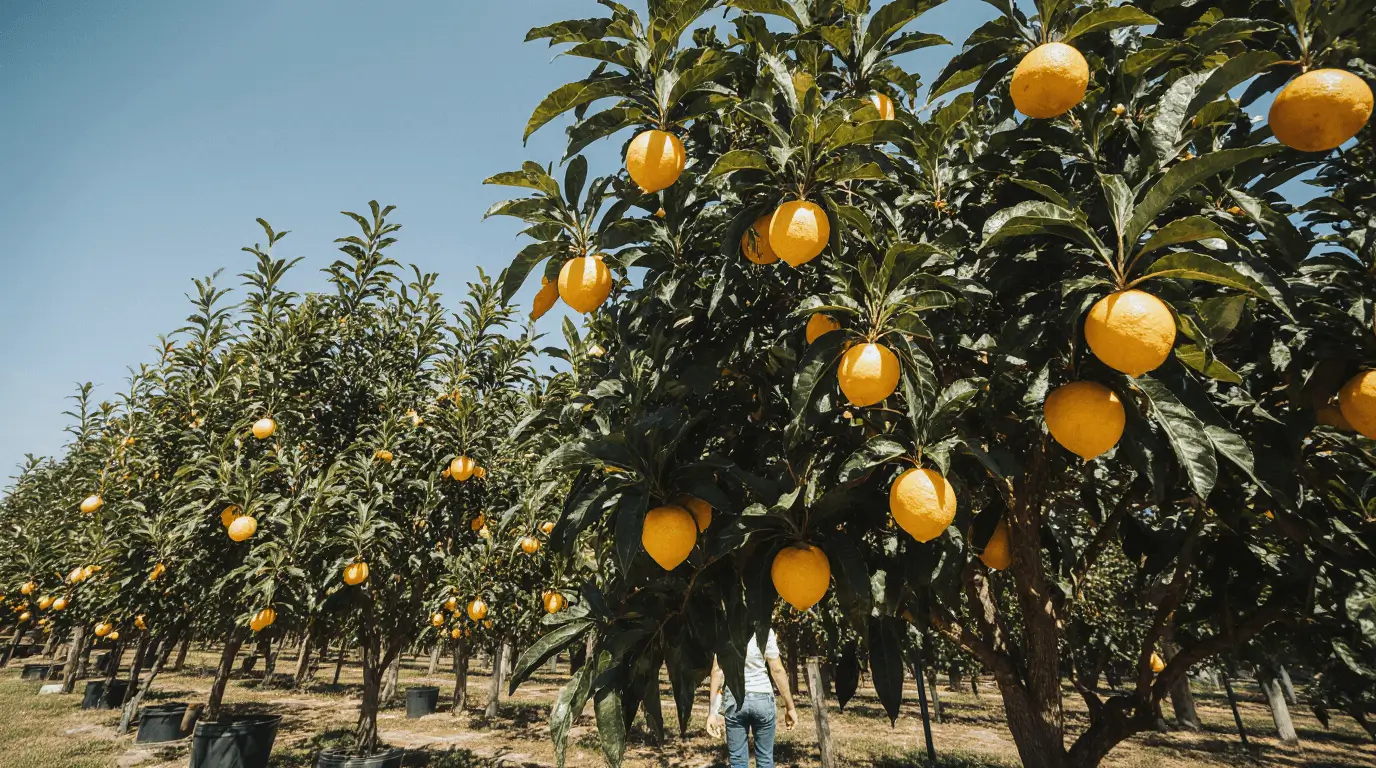

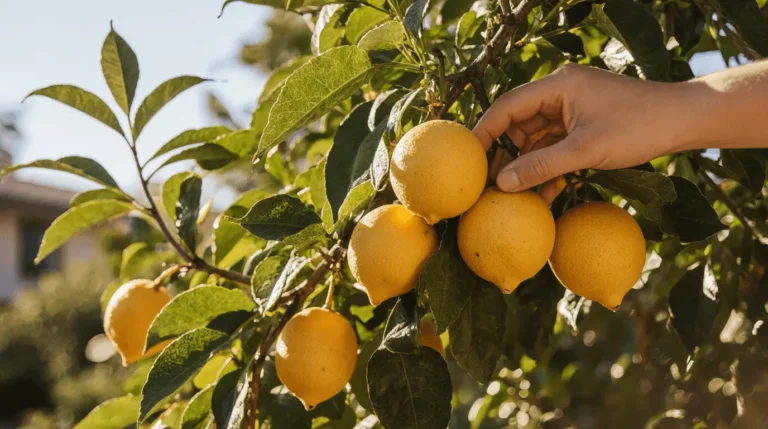

[…] you’re planning your garden layout, learn how big lemon trees can grow to space them […]